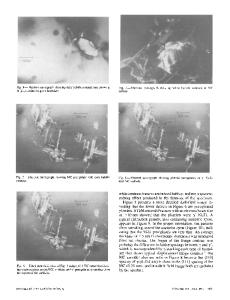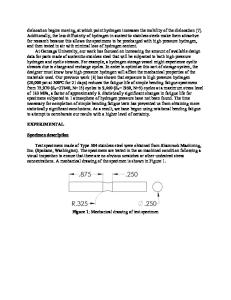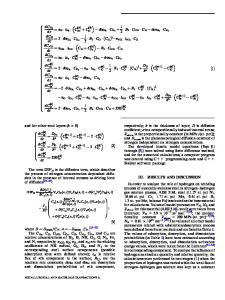The effect of hydrogen on the yield and flow stress of an austenitic stainless steel
- PDF / 1,187,516 Bytes
- 10 Pages / 598 x 778 pts Page_size
- 14 Downloads / 305 Views
I.
INTRODUCTION
AUSTENITIC stainless steels are commonly used in hydrogen-rich environments in industry and in space engines where hydrogen is used as a fuel. The diffusivity of hydrogen in these face-centered cubic (fcc) steels is lower and these steels' solubility for hydrogen is higher than in bodycentered cubic (bcc) steels; hence, they are thought not to be as susceptible to hydrogen embrittlement as steels with a ferritic or martensitic microstructure. However, in regions of high stresses such as crack tips and notches, there can be a significant accumulation of hydrogen, which could lead to failure. The mechanisms proposed for such hydrogen embrittlement have not been verified. There is controversy between those who believe that the effect of hydrogen is to reduce the cleavage stress and those who believe that its dominant effect is to modify plastic behavior. The tensile test provides information on macroscopic quantities such as strength, ductility, and work hardening; this information, combined with microscopic observations, can be used to deduce dislocation behavior in the presence of hydrogen. The effect of hydrogen on tensile flow curves has been investigated in several studies, but the results have often been contradictory. The macroscopic experiments of Matsui and co-workersv,2,3] demonstrated that a decrease in the flow stress occurred in very pure iron in the presence of hydrogen. This effect was ascribed to hydrogen-enhanced dislocation mobility. Kimura and Birnbaumt4] demonstrated similar effects in nickel. BernsteintS~ suggested that hydrogen reduced the lattice friction stress, meaning that a hydrogen-associated dislocation could move more easily in a lattice than a dislocation either without hydrogen or with a carbon or nitrogen atmosphere. Lunarskat6J reviewed the effects of hydrogen on the plasticity of iron and noted that the predominant effect of hydrogen appeared to be the increase in screw dislocation mobility, probably due
DANIEL P. ABRAHAM, formerly Graduate Student, Department of Materials Science and Engineering, University of Illinois at UrbanaChampaign, is Postdoctoral Associate, Chemical Technology Division, Argonne National Laboratories, Argonne, IL 60439. CARL J. ALTSTETTER, Professor, is with the Department of Materials Science and Engineering, University of Illinois at Urbana-Champaign, Urbana, IL 61801. Manuscript submitted February 28, 1994. METALLURGICAL AND MATERIALSTRANSACTIONS A
to a reduction in dislocation line tension. Sirois and Bimbaum determined that hydrogen decreased the activation energy for plastic deformation in nickelY] Robertson and co-workers concluded from transmission electron microscopy (TEM) observations that hydrogen from a gaseous environment can increase the ease of nucleation and motion of dislocations in nickel, stainless steel, and other metalsY 1~1 In contrast to the observations of enhanced dislocation nucleation and increased dislocation velocities in the presence of hydrogen are the reports of solute hydrogen strengthening in metals. Bonis
Data Loading...











